Art & Exhibitions
Robot Artist Weaves a Stunning Web at Victoria and Albert Museum
The futuristic canopy is on view until November.
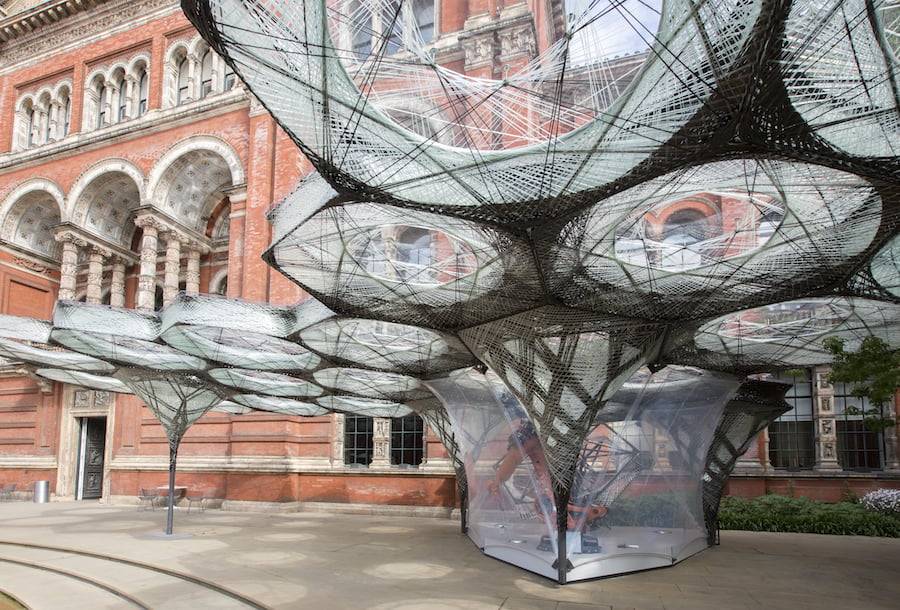
The futuristic canopy is on view until November.

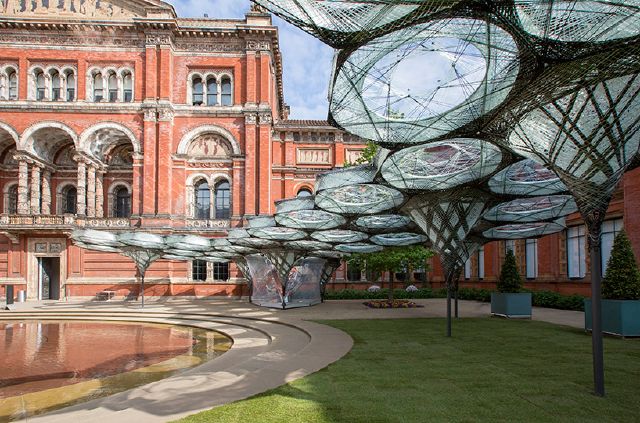
The Elytra Filament Pavilion at the Victoria and Albert Museum. © Victoria and Albert Museum, London.
The machines may be taking over, but if the new installation at London’s Victoria and Albert Museum is any indication, the public isn’t complaining. A robot is currently building the stunning Elytra Filament Pavilion in the museum’s John Madejski Garden, a glass and carbon fiber canopy inspired by nature.
The pavilion takes its name from the flying Elytra beetle, which employs an ingenious filament structure in its shell. A team from the University of Stuttgart (architect and researcher Achim Menges, architect Moritz Dörstelmann, structural engineer Jan Knippers, and climate engineer Thomas Auer) has artificially recreated that lightweight construction principle, using a robotic arm to weave fibers around a hexagon-shaped metal frame.
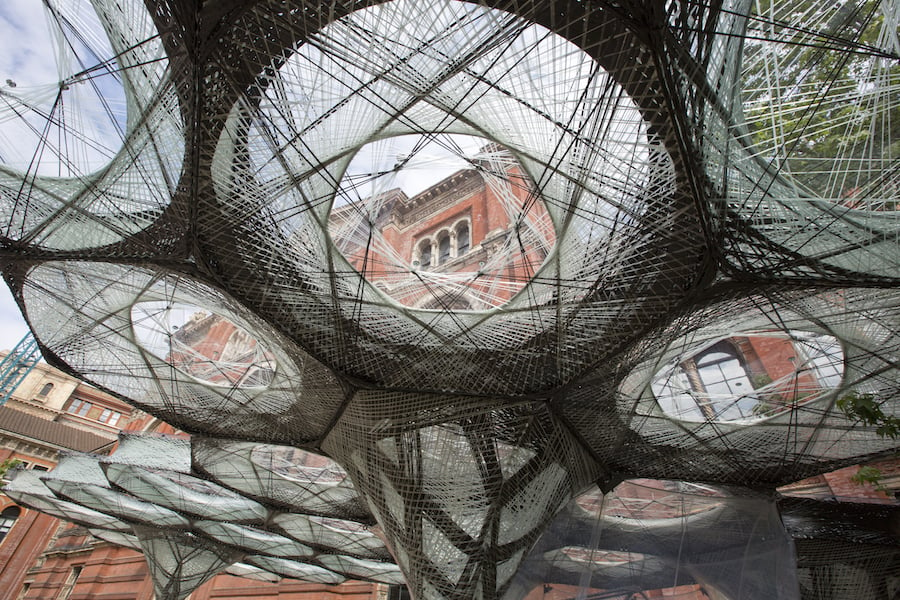
The Elytra Filament Pavilion at the Victoria and Albert Museum. © Victoria and Albert Museum, London.
That robotic arm, called KUKA, will remain on site at the V&A for the duration of the show, which is on view until November 6, continuing to add to the pavilion on an ongoing basis.
Each component takes about three hours to build and resembles a larger-than-life spiderweb. Despite its delicate appearance, the canopy is waterproof, in addition to being remarkably lightweight, the BBC reports.
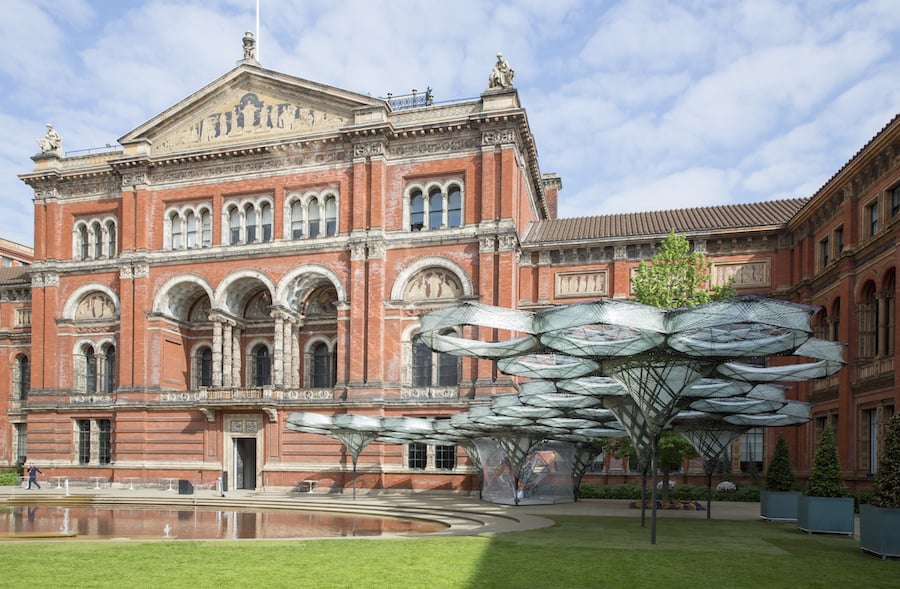
The Elytra Filament Pavilion at the Victoria and Albert Museum. © Victoria and Albert Museum, London.
The whole thing certainly puts painting robots to shame, and could likely even give the annual Serpentine Pavilion a run for its money. (This year’s Bjarke Ingels-designed edition opens June 10.)
The Elytra Filament Pavilion is part of the V&A museum’s Engineering Season, an initiative focusing on the intersection of art and engineering through installations, exhibitions, and talks. Admission to the pavilion is free.
See more photos below.
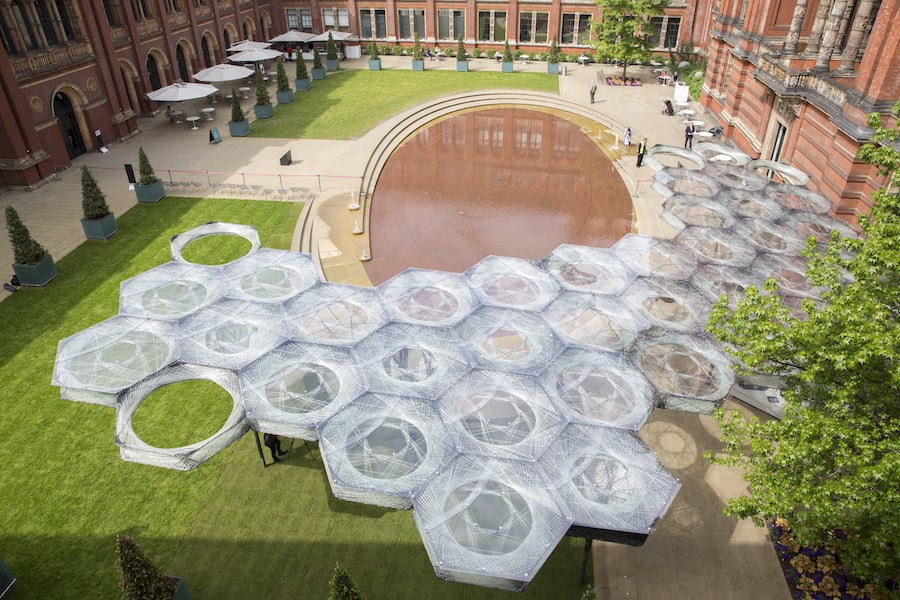
The Elytra Filament Pavilion at the Victoria and Albert Museum. © Victoria and Albert Museum, London.
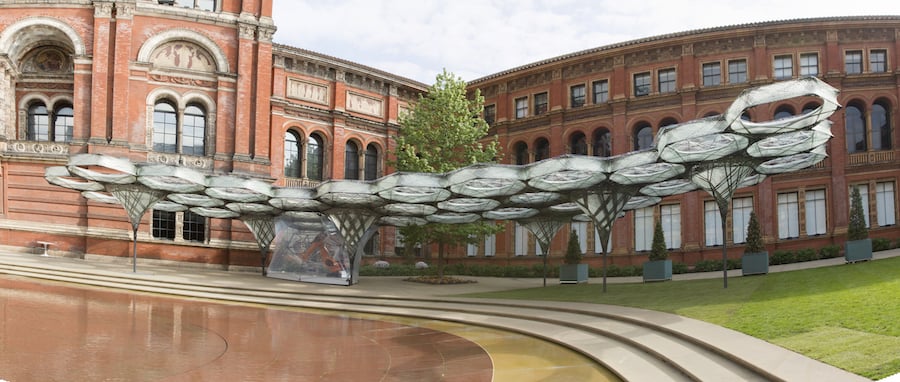
The Elytra Filament Pavilion at the Victoria and Albert Museum. © Victoria and Albert Museum, London.
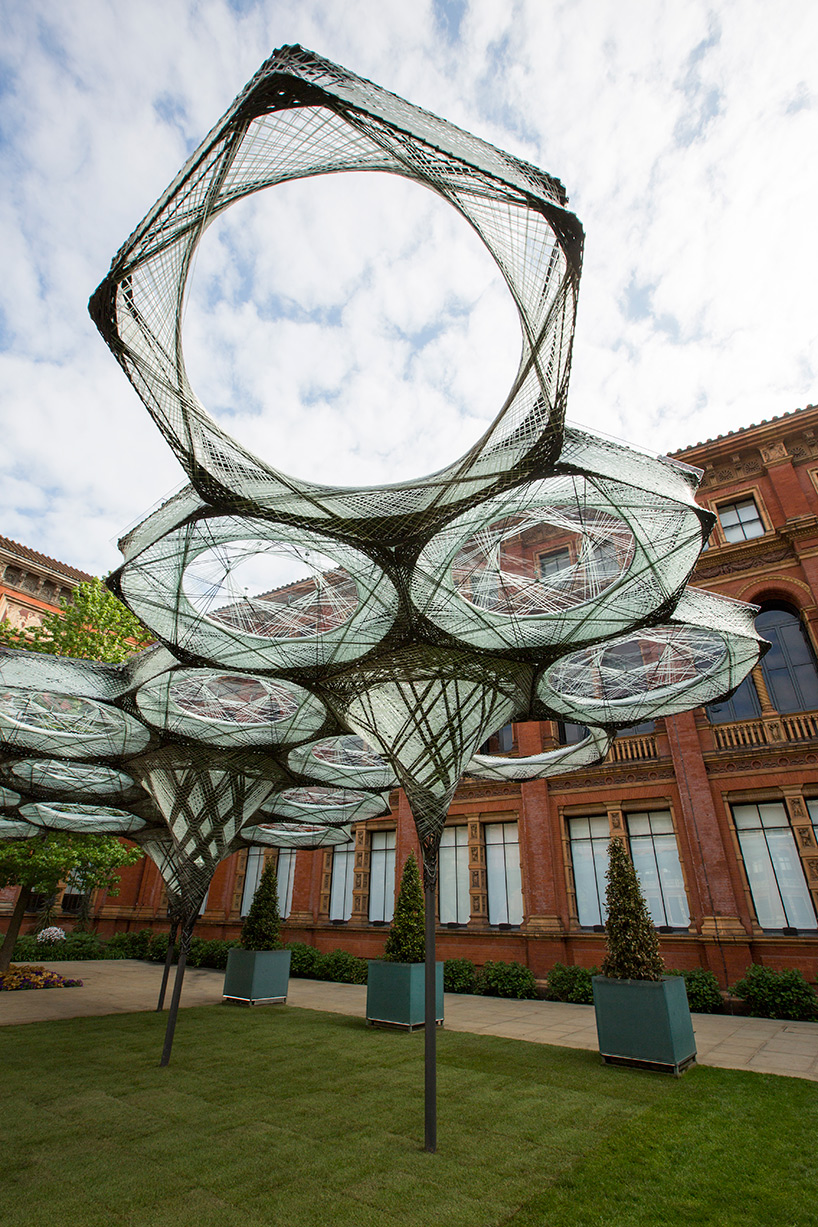
The Elytra Filament Pavilion at the Victoria and Albert Museum. © Victoria and Albert Museum, London.
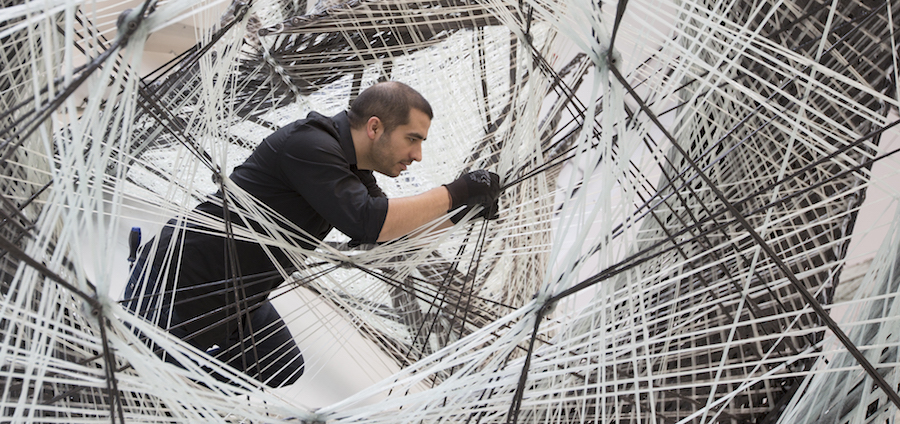
The Elytra Filament Pavilion at the Victoria and Albert Museum. © Victoria and Albert Museum, London.
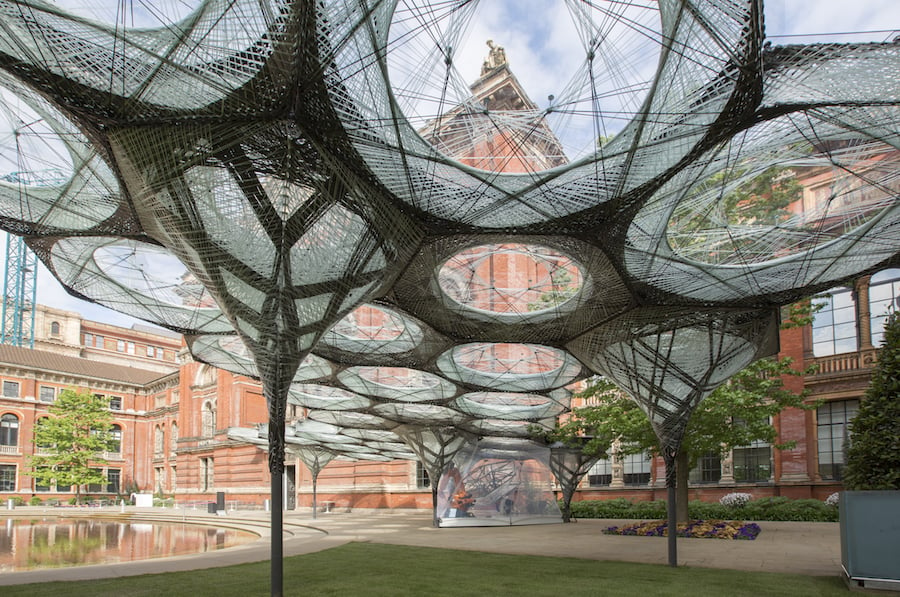
The Elytra Filament Pavilion at the Victoria and Albert Museum. © Victoria and Albert Museum, London.

The Elytra Filament Pavilion at the Victoria and Albert Museum. © Victoria and Albert Museum, London.
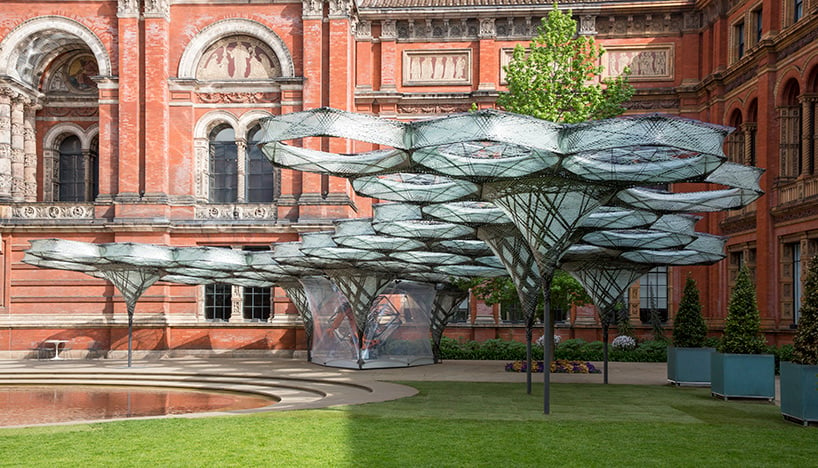
The Elytra Filament Pavilion at the Victoria and Albert Museum. © Victoria and Albert Museum, London.
The Elytra Filament Pavilion is on view at the Victoria and Albert Museum, London, May 18–November 6, 2016.